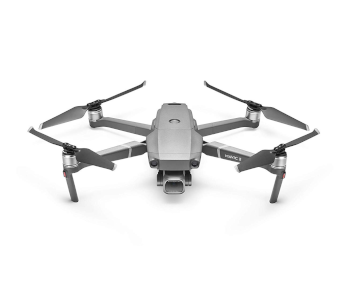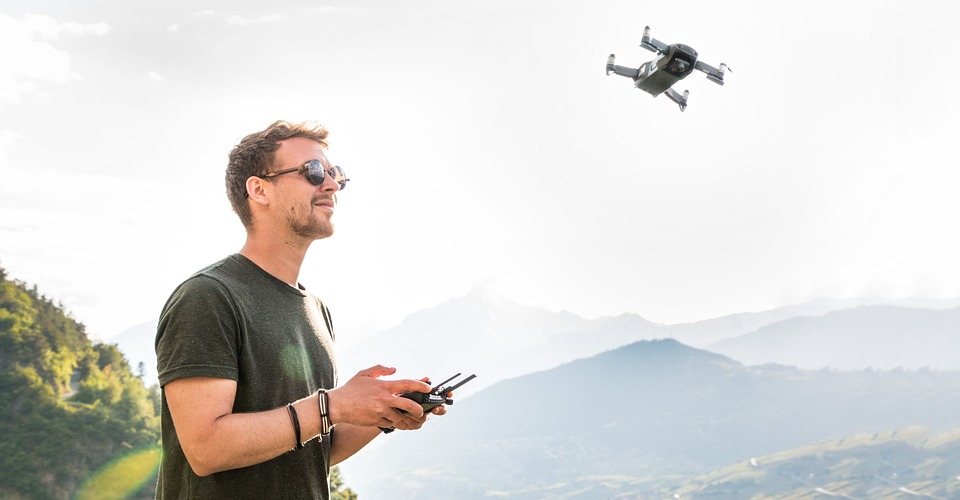LAANC for Recreational Drone Pilots: Getting Started
Although the FAA has been paying special attention to commercial drone pilots for the last couple of years, there is simply no way that they can ignore recreational drone pilots. After all, the number of recreational drone pilots back in January 2018 were estimated to be at almost 900,000. With this in mind, we are glad to see the FAA’s move to include recreational drone pilots into the LAANC system for instant approval in controlled airspace.
Not being able to fly in controlled airspace has long been a cause for frustration for recreational drone pilots. With the LAANC provision, what procedures do recreational pilots have to follow to secure authorization to fly in areas near airports?
A bit of history: the repeal of Section 336

Several years ago, the only law that regulated recreational drone pilots was Section 336, more commonly known as the Special Rule for Modern Aircraft. In addition to the rules and restrictions that have been imposed on recreational drone pilots, Section 336 also stated that “the FAA does not have the right to regulate model aircraft.” This provision became a pivotal argument back in 2017 when the Court of Appeals decided that drones used for recreational flight were exempted from the FAA’s requirement on drone registration.
However, the FAA Reauthorization Act of 2018 effectively repealed Section 336. Section 349 of the new act stated that recreational aircraft shall be subject to any FAA regulations or updates, particularly those relating to registration and flight in controlled airspace. Further, the FAA restricted the definition of “Community-based organizations” – a term that was frequently quoted under the old recreational rules. Under the new rule, a CBO needs to apply to the FAA for official recognition before they can have members fly according to their organization guidelines.
The recreational drone flight community took a big hit with the repeal of Section 336. Not only were they required (again) to register drones that weigh more than 0.55 pounds, but they became temporarily limited to flying only in Class G airspace or specific sites in controlled airspace. With the integration of recreational drone pilots in the LAANC system, they can finally fly in the same airspace as Part 107-licensed pilots.
What is LAANC?
LAANC stands for Low Altitude Authorization and Notification Capability (LAANC), a system developed by the FAA that allows drone pilots to request for approval to fly in controlled airspace and receive near-instant feedback. Instead of drone pilots having to contact air traffic control or airport operators themselves, the FAA instead acts as the central party that receives these requests and coordinates with the concerned parties.
The LAANC was developed by the FAA in collaboration with several private drone operators, including developers of several drone flight apps. Before LAANC, commercial drone pilots had to request for a Part 107 waiver through the FAA DroneZone portal – a process that could last 90 days before approval could be granted.
The advantage of a real-time approval system like LAANC is that it allows Temporary Flight Restrictions (TFR) or Notice to Airmen (NOTAM) to be considered in the approval process. It also helps airports maintain better visibility of the drones flying around their immediate airspace while relieving the pressure of having to field calls from drone pilots seeking for ATC authorization,
What apps support instant authorization for recreational drone pilots?
Although the LAANC system is available in virtually all of the popular drone flight apps, the initial rollout of the provision for recreational pilots is still limited to three apps: Airmap, KittyHawk, and UASidekick. Global leader DJI has come with an announcement recommending KittyHawk, but any of the other two options are also excellent. We also expect this list to grow longer in the next couple of months.
Are there different flight rules for recreational and commercial pilots?
Under the FAA Reauthorization Act, recreational drone pilots have become under the authority of the FAA. This means that they must follow this set of rules:
- Register your drone and mark it clearly with the registration number.
- Fly only for recreational purposes.
- Follow the flight safety guidelines of an FAA-approved community-based organization.
- Maintain a maximum altitude of 400 feet when flying in Class G or uncontrolled airspace.
- Do not fly in controlled airspace unless:
- You receive the appropriate authorization via LAANC
- You are flying at one of the sites specified by the FAA where authorization is no longer needed. The list of approved sites can be viewed here.
- Keep your drone within visual line-of-sight of the Remote PIC or a visual observer who is in direct communication with the PIC.
- Do not fly in prohibited airspace.
- Do not fly near other aircraft, over people, or over public events.
- Do not fly near emergencies with accident response or law enforcement activities.
- Do not fly under the influence of drugs or alcohol.
You’ll notice that there is still no rule that restricts recreational drone pilots from flying at night. There is also no need for recreational drone pilots to apply for a remote pilot certificate, although this may change soon.
How can recreational drone pilots ask for instant authorization?
Each drone flight app has a different way of implementing the LAANC feature, but there shouldn’t be major variations from one app to the other. For this example, we are going to use the AirMap app, which can be accessed on Android or iOS devices, or through your browser.
- Upon starting the app, you’ll need to provide the location of your planned drone flight. You can either start with your current location or use the Search function to type in an address or a landmark.
- After choosing a selection, the app will display the flight restrictions that are active in your chosen location. This screen should show if you are flying in controlled airspace and if, indeed, you need to apply for LAANC approval.
- If you do decide to apply for LAANC approval, make sure to choose the “FAA Recreational Flyers – 44809” ruleset.
- On the following screen, you will define the extent of the area for which you are asking for approval. You can either add individual sections of the pre-defined grid or drag a custom area across the grid boundaries. Each section of the grid is labeled with a number that corresponds to the maximum allowable altitude for drone flight in that section.
- Complete the pre-flight checklist, which is just a series of yes or no questions regarding your drone’s fitness for flight and whether you have done a pre-flight inspection of your drone.
- Before clicking SUBMIT, you will be shown a Flight Brief of the rules for your planned flight, plus a summarized weather forecast. Just give this section a quick review, then submit your application.
It typically only takes several seconds to a few minutes to receive approval. If your request has been approved, you should receive an SMS message with a confirmation number. You can also view the authorization confirmation through the Airmap Flight Brief. If you need an actual, printed copy of the authorization, you can download a Notice of Authorization in PDF format directly from the app.
What’s next for recreational drone pilots?
While the LAANC approval should be a welcome development for recreational drone pilots, it’s not the end of FAA’s effort to integrate them into the national airspace. Under Section 349 of the FAA Reauthorization Act, and we quote;
“This section creates a framework for the operation of recreational aircraft including operating requirements, aeronautical knowledge testing, and the qualifications for community-based organizations that support recreational aircraft activities.”
From this statement, there are two things that the FAA is yet to implement: knowledge testing for recreational drone pilots, and the establishment of a framework for the approval of community-based organizations. According to the FAA, they are currently still developing a training module and a knowledge and safety test for recreational drone pilots, which is being done in coordination with the drone community.
Other provisions in the FAA Reauthorization Act are less of a concern to recreational drone pilots, such as coming up with a certification for drone operators who wish to use their drones for parcel delivery, or the review of agencies that are authorized to use counter-UAS technologies.
The FAA has been pretty vocal about their objective to develop an Unmanned Traffic Management (UTM) and Remote ID system for drones, which is incidentally also covered by the FAA Reauthorization Act. In fact, the implementation of the LAANC system is considered a step towards developing this system. We’re not quite how this will go, and it will likely take a couple of years before anything concrete happens. However, we expect this sort of development on all types of drone pilots – commercial and recreational alike.
Final thoughts
It’s been an interesting couple of years for recreational drone pilots. Between being required to register their drones, having this requirement repealed, and having it established again, it’s no secret that there is quite a lot of frustration in the recreational drone flight community. Although the FAA Reauthorization Act of 2018 is still considered controversial until today, it at least provided a concrete direction for drone flight legislation.
With the implementation of the LAANC system for recreational drone flight, we are glad to see the previous restrictions on recreational drone pilots finally lifted. LAANC, being a young system, is far from perfect, but it’s a step in the right direction. Whatever happens, it’s still a massive improvement from the old process of having to wait a few months to get an approval to fly in controlled airspace.
The FAA still seems to have a lot planned for recreational drone pilots. These changes probably won’t be unanimously welcomed, as people are predisposed to resist any type of change, but we’ll just have to wait and see for now.

